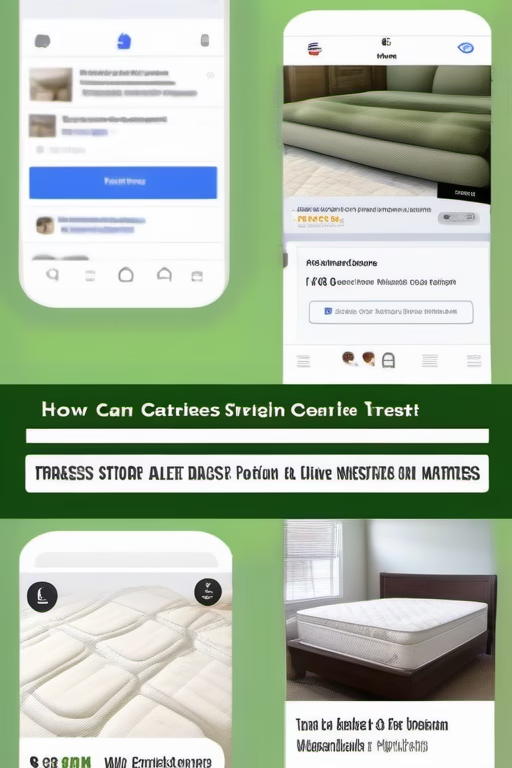How to Sell More HVAC Services with SEO: Dominate Local Search Results
Your Complete Local SEO Blueprint by Market Wiz
Table of Contents
- Introduction: Why SEO Matters for HVAC
- 1. Keyword Research & Strategy
- 1.1 Core Service Terms
- 1.2 Long‑Tail & “Near Me” Phrases
- 1.3 Seasonal & Emergency Keywords
- 2. On‑Page Optimization
- 2.1 Title Tags & Meta Descriptions
- 2.2 Header Tags & Content Structuring
- 2.3 Image Alt Text & FAQ Schema
- 3. Technical SEO Essentials
- 3.1 Mobile‑First & Site Speed
- 3.2 Secure HTTPS & XML Sitemaps
- 3.3 Crawlability & Structured Data
- 4. Local SEO Mastery
- 4.1 Google Business Profile
- 4.2 Local Citations & NAP Consistency
- 4.3 Reviews & Reputation Management
- 5. Content Marketing & Blogging
- 5.1 How‑To Guides & Maintenance Tips
- 5.2 Seasonal HVAC Checklists
- 5.3 Video & Infographic Integration
- 6. Link Building & Authority
- 6.1 Local Sponsorships & Partnerships
- 6.2 Guest Posts & Industry Directories
- 6.3 Community Event Coverage
- 7. User Experience & Conversion Optimization
- 7.1 Clear Calls‑to‑Action
- 7.2 Booking Forms & Chatbots
- 7.3 Mobile Navigation & Speed
- 8. Analytics & Reporting
- 8.1 Google Analytics Goals
- 8.2 Search Console Insights
- 8.3 KPI Dashboards
- 9. Essential SEO Tools & Plugins
- 10. Real‑World HVAC SEO Case Studies
- Conclusion & Next Steps
- 25 Frequently Asked Questions
- 25 Extra Keywords
Introduction: Why SEO Matters for HVAC
In a world where homeowners and businesses search online first for heating, cooling, and ventilation services, ranking at the top of Google can transform your HVAC company’s phone ringing from sporadic to non‑stop. Unlike paid ads, organic SEO drives sustainable, cost‑effective leads—fueling consistent service calls, maintenance contracts, and emergency repairs. Let’s dive into the local SEO blueprint that will put your HVAC services front and center in your community.
1. Keyword Research & Strategy
1.1 Core Service Terms
Start with high‑volume phrases like “AC repair,” “furnace installation,” and “HVAC maintenance.” Use tools such as Ahrefs or SEMrush to gauge search volumes and competition.
1.2 Long‑Tail & “Near Me” Phrases
Capture intent with terms like “air conditioner repair near me,” “emergency HVAC service [City],” and “best furnace tune‑up in [ZIP].” These often have lower competition and higher conversion rates.
1.3 Seasonal & Emergency Keywords
Identify peak seasonal searches—“heat pump service spring,” “AC not cooling summer,” or “furnace breakdown winter emergency.” Optimizing for these boosts traffic when demand is highest.
2. On‑Page Optimization
2.1 Title Tags & Meta Descriptions
Embed primary keywords and local modifiers into your title tags (under 60 characters) and craft compelling meta descriptions (up to 155 characters) that highlight unique selling points like “24/7 emergency service” or “free estimates.”
2.2 Header Tags & Content Structuring
Structure pages with a single H1 tag containing your main keyword, followed by H2/H3 subheaders that break content into digestible sections—such as “Signs Your AC Needs Service” or “HVAC Maintenance Checklist.”
2.3 Image Alt Text & FAQ Schema
Optimize all images (e.g., “Technician installing furnace in [City] home”) and implement FAQPage schema for common questions—so you can appear in rich results and voice search.
3. Technical SEO Essentials
3.1 Mobile‑First & Site Speed
Ensure your site loads under 3 seconds by compressing images, leveraging browser caching, and using a mobile‑optimized theme—vital for both user satisfaction and Google’s mobile‑first indexing.
3.2 Secure HTTPS & XML Sitemaps
Migrate to HTTPS for security and trust. Generate an XML sitemap and submit it in Google Search Console to help crawlers discover your pages quickly.
3.3 Crawlability & Structured Data
Use robots.txt to control crawler access and add structured data for your business (LocalBusiness schema) and services (Service schema) to enhance SERP appearance.
4. Local SEO Mastery
4.1 Google Business Profile
Claim and optimize your GBP: complete every field, add high‑quality interior and exterior photos, post updates about promotions, and respond to reviews promptly to boost your local pack ranking.
4.2 Local Citations & NAP Consistency
Ensure your Name, Address, and Phone are identical across all directories—Yelp, Angi, HomeAdvisor—to build trust with search engines and potential clients.
4.3 Reviews & Reputation Management
Encourage 5‑star reviews on Google and Facebook. Address negative feedback professionally—demonstrating care and boosting overall rating, which factors heavily in local rankings.
5. Content Marketing & Blogging
5.1 How‑To Guides & Maintenance Tips
Publish articles like “5 Signs Your AC Needs Repair” or “DIY HVAC Filter Replacement”—answering common queries and attracting top‑of‑funnel visitors.
5.2 Seasonal HVAC Checklists
Create downloadable checklists—“Spring AC Tune‑Up Guide” or “Winter Furnace Prep”—to capture leads via gated content and email nurture sequences.
5.3 Video & Infographic Integration
Embed short explainer videos and infographics summarizing maintenance steps to increase dwell time and social shares.
6. Link Building & Authority
6.1 Local Sponsorships & Partnerships
Sponsor community events or local sports teams and request a backlink from their site’s sponsors page—boosting local relevance.
6.2 Guest Posts & Industry Directories
Contribute HVAC tips to home improvement blogs, and list your business in reputable industry directories for quality backlinks.
6.3 Community Event Coverage
Write blog posts or press releases covering your volunteering at charity HVAC setups—earn local news coverage and backlinks.
7. User Experience & Conversion Optimization
7.1 Clear Calls‑to‑Action
Place prominent buttons—“Schedule Service,” “Get a Free Quote,” “24/7 Emergency Call”—above the fold and at page ends.
7.2 Booking Forms & Chatbots
Embed simple lead capture forms and deploy chat widgets that qualify leads and schedule appointments instantly.
7.3 Mobile Navigation & Speed
Use a sticky header with click‑to‑call, minimize menu complexity, and ensure buttons are thumb‑friendly.
8. Analytics & Reporting
8.1 Google Analytics Goals
Configure Goals for form submits, phone clicks, and brochure downloads to measure lead generation effectiveness.
8.2 Search Console Insights
Monitor keyword rankings, click‑through rates, and crawl errors in Search Console to identify optimization opportunities.
8.3 KPI Dashboards
Create a dashboard combining organic traffic, lead volume, and ranking positions—demonstrating SEO ROI to stakeholders.
9. Essential SEO Tools & Plugins
- Ahrefs or SEMrush for keyword & backlink research
- Google PageSpeed Insights for performance audits
- Yoast SEO or Rank Math for on‑page guidance
- LocalFalcon for local rank tracking
- Screaming Frog for technical crawling
10. Real‑World HVAC SEO Case Studies
A regional HVAC company doubled organic leads within six months by launching city‑specific service pages and optimizing their Google Business Profile. Another contractor saw a 75% boost in emergency repair calls by targeting “AC repair near me” and adding FAQ schema to their site.
Conclusion & Next Steps
Dominating local search for HVAC services requires a holistic SEO approach: strategic keyword targeting, rigorous on‑page and technical optimization, local pack mastery, and ongoing content & link building. Start by auditing your current site, updating your Google Business Profile, and mapping out a content calendar. With continuous tracking and refinement, you’ll rank higher in your community, capture more service calls, and grow your HVAC business sustainably.
25 Frequently Asked Questions
1. How long does HVAC SEO take to show results?
Typically 3–6 months for noticeable ranking improvements; foundational fixes can yield quicker wins.
2. Which keywords should I target first?
Start with high‑intent, local terms like “AC repair near me [City]” and “emergency furnace service [ZIP].”
3. How important are online reviews?
Very—both the quantity and quality of Google reviews strongly influence local pack rankings and click‑through rates.
4. Do I need a blog?
Yes—regular blog posts targeting common HVAC queries help you rank for long‑tail terms and establish authority.
5. How often should I update content?
Refresh key service pages quarterly and publish new blog posts at least bi‑weekly for best results.
6. What is schema markup?
Structured data that helps search engines understand your content and display rich snippets like FAQs and service details.
7. How do I optimize my Google Business Profile?
Complete every field, upload high‑quality photos, post updates weekly, and respond promptly to reviews.
8. What tools help track SEO progress?
Use Google Analytics, Search Console, Ahrefs, and LocalFalcon for comprehensive tracking of traffic, rankings, and local performance.
9. How many backlinks do I need?
Focus on quality—acquiring a handful of high‑authority, relevant links is more impactful than many low‑value ones.
10. How do I improve mobile speed?
Compress images, leverage browser caching, and use a lightweight, responsive theme.
11. Should I block certain pages from crawling?
Yes—noindex paginated and thin‑content pages to concentrate crawl budget on your priority service pages.
12. How to handle seasonal SEO?
Create seasonal landing pages and blog posts—“Spring AC Tune‑Up” or “Winter Furnace Prep”—to capture timely searches.
13. What’s the ideal page length?Service pages: 800–1,200 words; in‑depth guides: 1,500–2,500 words for thorough coverage.14. How do I fix crawl errors?Use Search Console to identify 404s or server errors, then implement 301 redirects or correct broken links.15. Can social media improve SEO?Indirectly—social shares drive traffic and visibility, which can lead to natural backlinks.16. How to optimize images?Use descriptive alt text, compress file sizes, and ensure images are responsive for all devices.17. What is E‑A‑T?Expertise, Authoritativeness, Trustworthiness—factors Google uses to assess content quality, especially for service industries.18. Why is HTTPS essential?HTTPS is a ranking signal and essential for securing user data during quote requests and form submissions.19. How often should I audit SEO?Perform a full technical audit twice a year and spot‑check key metrics monthly.20. What’s the first SEO step?Conduct a comprehensive site audit to identify technical issues, content gaps, and local SEO opportunities.21. How do I track organic ROI?Compare organic lead volume and conversion rates to SEO investment in time and tools to calculate ROI.22. Should I use a sitemap?Yes—an XML sitemap ensures search engines discover and index all important pages on your site.23. How to improve click‑through rate?Write compelling meta descriptions and titles, use FAQ schema, and include service-area modifiers for relevance.24. Can I DIY HVAC SEO?Yes—with dedication and the right resources, but hiring an expert speeds up results and avoids pitfalls.25. How to stay ahead of competitors?Continuously monitor their keyword rankings, backlink profile, and local reviews—then refine your strategy accordingly.
15. Can social media improve SEO?Indirectly—social shares drive traffic and visibility, which can lead to natural backlinks.16. How to optimize images?Use descriptive alt text, compress file sizes, and ensure images are responsive for all devices.17. What is E‑A‑T?Expertise, Authoritativeness, Trustworthiness—factors Google uses to assess content quality, especially for service industries.18. Why is HTTPS essential?HTTPS is a ranking signal and essential for securing user data during quote requests and form submissions.19. How often should I audit SEO?Perform a full technical audit twice a year and spot‑check key metrics monthly.20. What’s the first SEO step?Conduct a comprehensive site audit to identify technical issues, content gaps, and local SEO opportunities.21. How do I track organic ROI?Compare organic lead volume and conversion rates to SEO investment in time and tools to calculate ROI.22. Should I use a sitemap?Yes—an XML sitemap ensures search engines discover and index all important pages on your site.23. How to improve click‑through rate?Write compelling meta descriptions and titles, use FAQ schema, and include service-area modifiers for relevance.24. Can I DIY HVAC SEO?Yes—with dedication and the right resources, but hiring an expert speeds up results and avoids pitfalls.25. How to stay ahead of competitors?Continuously monitor their keyword rankings, backlink profile, and local reviews—then refine your strategy accordingly.
17. What is E‑A‑T?Expertise, Authoritativeness, Trustworthiness—factors Google uses to assess content quality, especially for service industries.18. Why is HTTPS essential?HTTPS is a ranking signal and essential for securing user data during quote requests and form submissions.19. How often should I audit SEO?Perform a full technical audit twice a year and spot‑check key metrics monthly.20. What’s the first SEO step?Conduct a comprehensive site audit to identify technical issues, content gaps, and local SEO opportunities.21. How do I track organic ROI?Compare organic lead volume and conversion rates to SEO investment in time and tools to calculate ROI.22. Should I use a sitemap?Yes—an XML sitemap ensures search engines discover and index all important pages on your site.23. How to improve click‑through rate?Write compelling meta descriptions and titles, use FAQ schema, and include service-area modifiers for relevance.24. Can I DIY HVAC SEO?Yes—with dedication and the right resources, but hiring an expert speeds up results and avoids pitfalls.25. How to stay ahead of competitors?Continuously monitor their keyword rankings, backlink profile, and local reviews—then refine your strategy accordingly.
19. How often should I audit SEO?Perform a full technical audit twice a year and spot‑check key metrics monthly.20. What’s the first SEO step?Conduct a comprehensive site audit to identify technical issues, content gaps, and local SEO opportunities.21. How do I track organic ROI?Compare organic lead volume and conversion rates to SEO investment in time and tools to calculate ROI.22. Should I use a sitemap?Yes—an XML sitemap ensures search engines discover and index all important pages on your site.23. How to improve click‑through rate?Write compelling meta descriptions and titles, use FAQ schema, and include service-area modifiers for relevance.24. Can I DIY HVAC SEO?Yes—with dedication and the right resources, but hiring an expert speeds up results and avoids pitfalls.25. How to stay ahead of competitors?Continuously monitor their keyword rankings, backlink profile, and local reviews—then refine your strategy accordingly.
21. How do I track organic ROI?Compare organic lead volume and conversion rates to SEO investment in time and tools to calculate ROI.22. Should I use a sitemap?Yes—an XML sitemap ensures search engines discover and index all important pages on your site.23. How to improve click‑through rate?Write compelling meta descriptions and titles, use FAQ schema, and include service-area modifiers for relevance.24. Can I DIY HVAC SEO?Yes—with dedication and the right resources, but hiring an expert speeds up results and avoids pitfalls.25. How to stay ahead of competitors?Continuously monitor their keyword rankings, backlink profile, and local reviews—then refine your strategy accordingly.
23. How to improve click‑through rate?Write compelling meta descriptions and titles, use FAQ schema, and include service-area modifiers for relevance.24. Can I DIY HVAC SEO?Yes—with dedication and the right resources, but hiring an expert speeds up results and avoids pitfalls.25. How to stay ahead of competitors?Continuously monitor their keyword rankings, backlink profile, and local reviews—then refine your strategy accordingly.
25. How to stay ahead of competitors?Continuously monitor their keyword rankings, backlink profile, and local reviews—then refine your strategy accordingly.
25 Extra Keywords
- local HVAC SEO
- HVAC services near me
- AC repair SEO strategy
- furnace installation optimization
- emergency HVAC SEO
- HVAC maintenance keywords
- Google Business Profile HVAC
- HVAC review management
- seasonal HVAC content
- HVAC link building tips
- structured data HVAC
- mobile speed HVAC site
- HVAC schema markup
- HVAC technical audit
- service area landing pages
- HVAC FAQ schema
- HVAC competitor analysis
- heat pump SEO
- ductless mini‑split SEO
- HVAC local citations
- HVAC content marketing
- video HVAC tips
- HVAC CRM integration
- organic HVAC leads
- Market Wiz HVAC guide

















